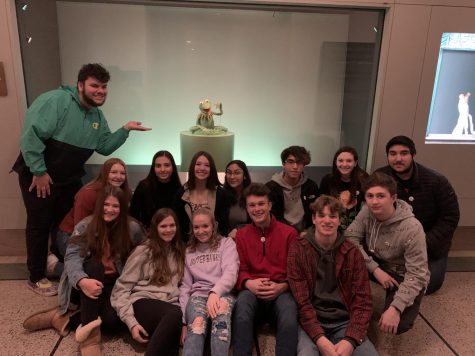MHS Spanish students visit the DIA
March 19, 2020
On Feb. 21, Spanish 3 students went on a field trip to the Detroit Institute of Art with MHS Spanish teacher Grisel Alfaro, or “Senora” for the students’ Hispanic art history unit. “It is very special for the students because they don’t realize what they are going to see,” explained Alfaro. “Even if they saw it before, they see it with a different perspective; it is more meaningful.”
After arriving at the Detroit Institute of Art, the students took a tour through the museum that focused on the Hispanic art. “It was cool to see the culture related to our Spanish class,” said Natalia Vujic. The tour was designed about 10 years ago by a few high school teachers, including Alfaro, because the DIA realized that classes visited the museum on a regular basis. The tour gave the students a first-hand understanding of the museum and an overview of the connection between the art in the museum and the art that students learned about in class. “We are shaping identities of world languages,” Alfaro stated.
The trip also included a scavenger hunt in which the students had to find and answer questions about paintings not included in the tour or had to focus more on specific pieces, like “El simulacro transparente de la falsa imagen,” or “Remordimiento, o esfinge enterrada en la arena,” both painted by Salvador Dali. During the exercises, they learned to better understand the relationship between the paintings and the Spanish language. One picture painted by the American painter, “Culebra,” shows the building of the Panama Canal and the relationship between Panama, a Spanish-speaking country, and the U.S. Other artworks included paintings by Picasso, Frida Kahlo and Silberstein.
Students saw many Spanish artworks throughout the day, but they unfortunately missed a few modern pieces because of the renovation in the modern art section. “That was really sad, but we saw enough pictures to understand how the art in the paintings is connected with the language that we learn in the classroom,” said Alfaro.
Finishing the day with lunch in the cafeteria, the students had time to think about what they learned. “The only thing that we had to pay was our time—we as the teachers and the students out of their classes,” explained Alfaro. The whole field trip is free for the students because the entry into the DIA is free and the bus is provided.
This trip was enjoyable for the students, and driving back, Alfaro heard many sad remarks saying “We have to come back.” This shows that on this day, the students didn’t only learn, they also had fun exploring the DIA. Vujic would recommend the trip, as she had a lot of fun and she thinks that it was very interesting.
The learning opportunities in the museum helped the students to see and connect what they hear in the classroom to real life and understand the relationship between the Spanish language and treasured works of art.
